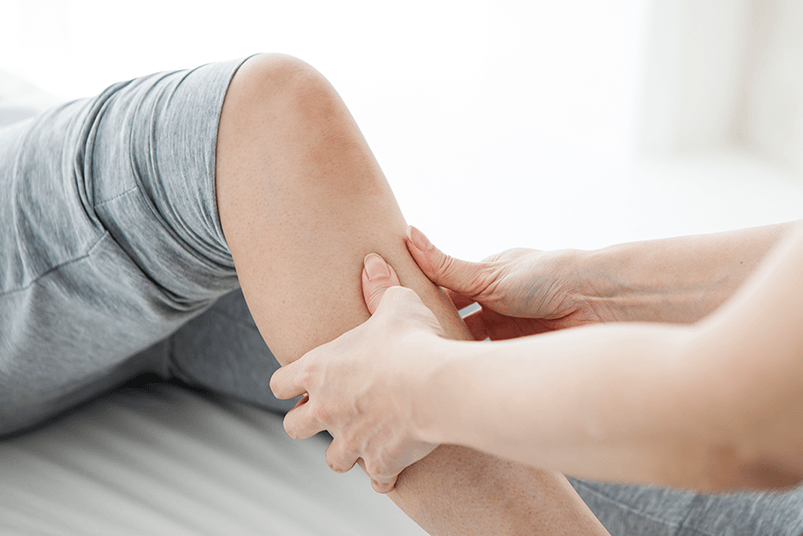Home » Procedures & Services » Fracture Care, Sprains, and Strains » ACL Injuries
ACL INJURIES

ACL Repair
The ACL (anterior cruciate ligament) is one of the most commonly injured ligaments in the knee. Running diagonally through the middle of the joint, the ACL works together with three other ligaments to connect the femur (upper leg bone) to the tibia (lower leg bone). ACL injuries occur most often in athletes as a result of direct contact, landing awkwardly after a fall or playing recklessly. About half of ACL injuries are also accompanied by damage to the meniscus, cartilage, bone or other ligaments in the knee.
Signs that you may have injured your ACL include pain, swelling and instability immediately after the injury, followed hours later by greater swelling and pain, limited motion, tenderness and an inability to walk comfortably. While not all ACL injuries will require surgery, leaving the ligament torn or damaged puts the patient at risk for recurring episodes of knee instability. In many cases, patients will not be able to resume high-level athletic activity without surgery.
Your doctor will determine whether or not surgery is recommended for you after a thorough evaluation of your condition, as well as consideration of your age, activity level and overall health. The details, risks and benefits of surgery, as well as the different surgical options, will be discussed during a pre-surgical consultation.
ACL Repair Procedure
ACL reconstruction is usually not performed until several weeks after the injury, when swelling and inflammation have been reduced. The torn ligament is completely removed and replaced with a new ACL. Simply reconnecting the torn ends will not repair the ACL. Part of another ligament, usually in the knee or hamstring, is used to create a graft for the new ACL. Choosing the proper type of graft depends on each patient’s individual condition.
During the procedure, an incision is made to access the knee, before the surgeon drills holes in the upper and lower leg bones to insert the graft and ensure stable, permanent support within the joint. The graft may be attached with screws or staples before incisions are closed. This procedure is performed under general anesthesia on an outpatient basis.
In many cases, this procedure can be performed using arthroscopic techniques, which involves creating a few small incisions in the knee, into which a camera and tiny surgical instruments are inserted. Saline is injected into the knee to allow for more operating space. The surgeon then performs the repair while viewing the knee on a television monitor for more precise results. Arthroscopy offers patients less scarring, shorter recovery times and an overall less invasive procedure.
Recovery From ACL Repair Surgery
Following ACL repair surgery, patients can return home after a few hours of observation. You will likely experience pain, bruising and swelling after surgery, which can be managed through pain medication prescribed by your doctor. Your individual recovery will vary depending on the type of procedure performed and your individual condition.
Physical therapy begins right after surgery, and may continue for several months to help patients return to activity with their reconstructed knee. In order to achieve the most effective results from surgery, patients must commit to a long-term rehabilitation program. After completion, many patients experience effective pain relief and a return to previous knee function, along with stability of the joint for long-term results.
Risks Of ACL Repair Surgery
Although considered safe, there are certain risks associated with ACL repair surgery. Some of these risks may include graft failure, loosening of the graft or ineffective surgical results. There are also certain risks associated with any surgical procedure, such as infection, bleeding, reactions to anesthesia and others.
Patients can reduce their risk of complications by choosing an experienced surgeon to perform their procedure. It is important to discuss these risks with your surgeon prior to your procedure in order to understand all aspects of surgery and maintain realistic expectations.

